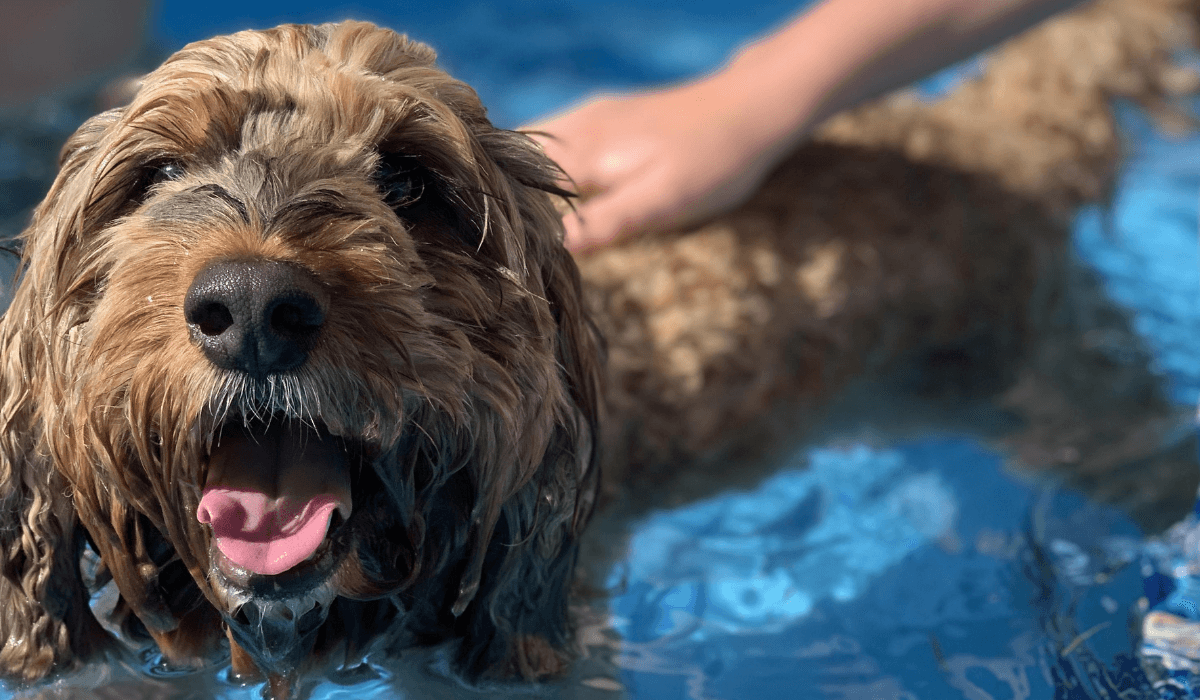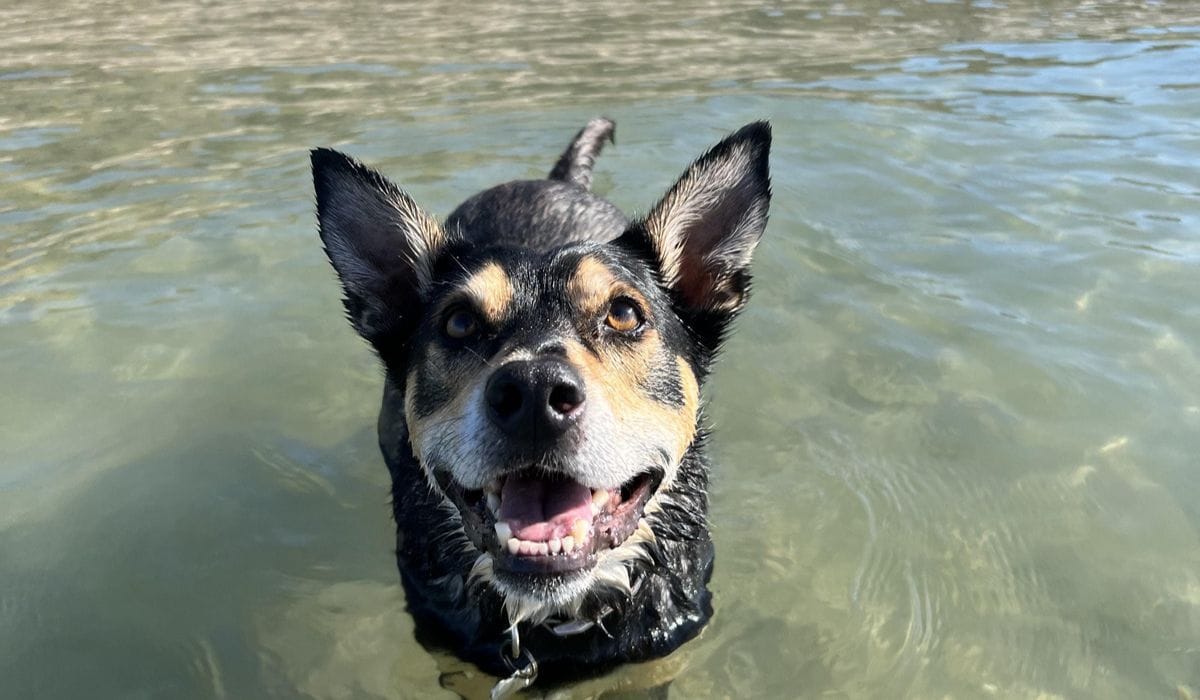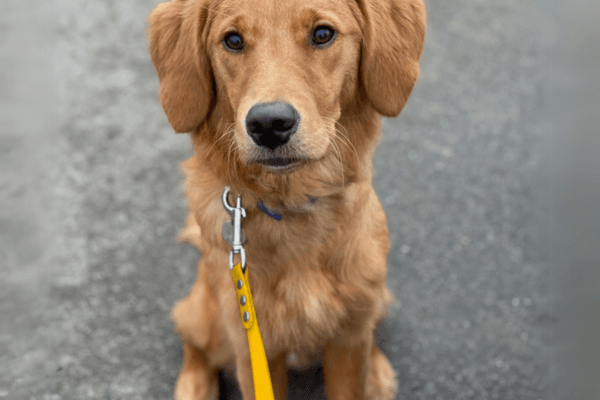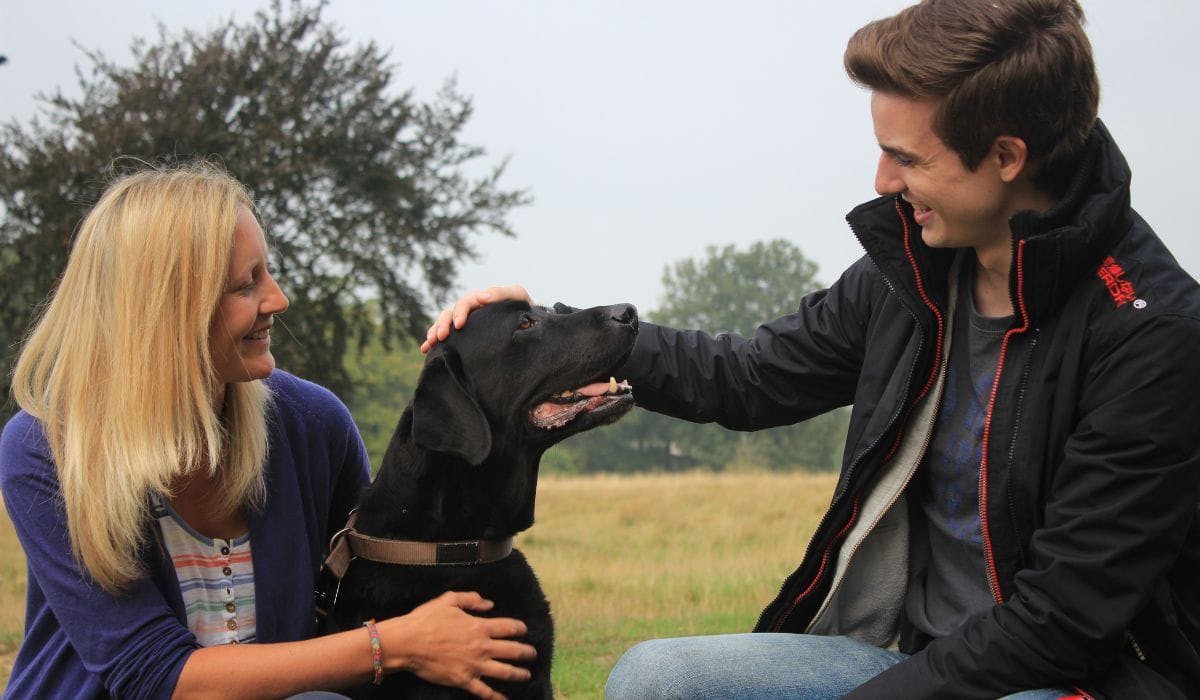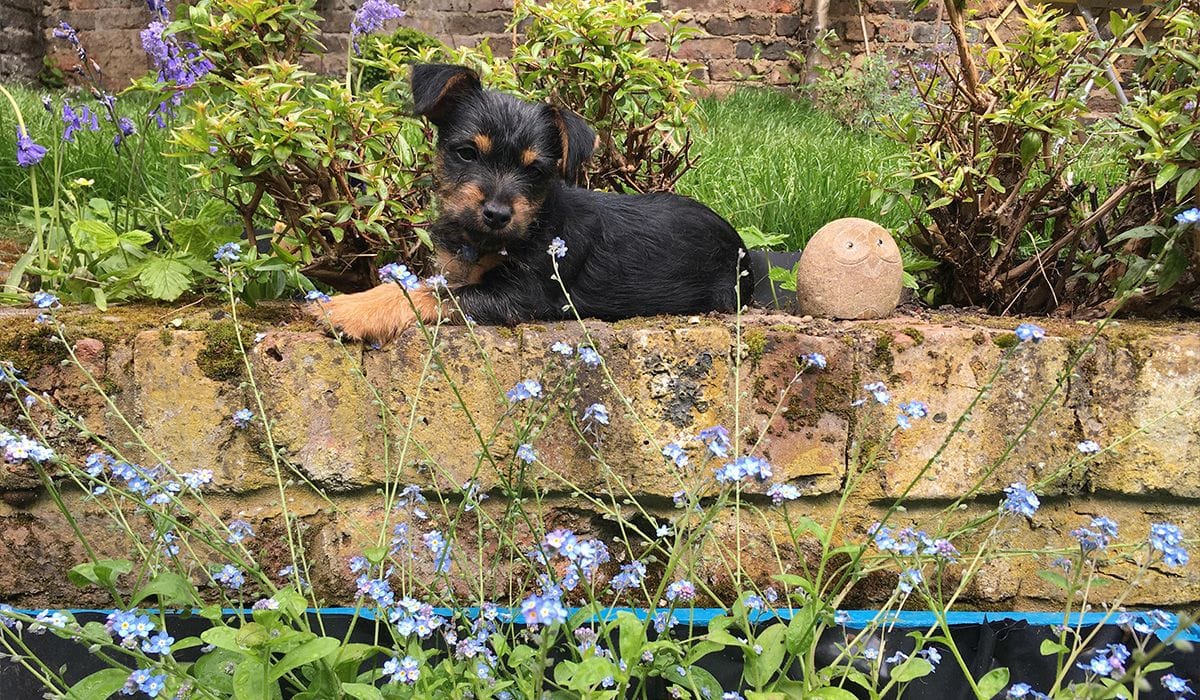During the warmer months, our fluffy companions can be at risk of heatstroke. We spoke with some experts who share the signs and symptoms of heatstroke and top tips and tricks on how we can keep our pups cool and other considerations to keep them happy and safe throughout summer!
Summary
How to keep your dog cool in the summer
Preventing dog parasites and other pesky problems
Heatstroke
Dr David Tweedle, My Family Pet Vet and Clinical Director at Natures Vet in Somerset, explains why heatstroke is a bigger threat to your pooch than you might think.

Heatstroke is more dangerous than it’s given credit for at this time of year, especially for dogs with very thick or dark-coloured coats. It’s important for owners to be aware of the threat of heatstroke because awareness leads to prevention, and prevention leads to happy pets.
Heatstroke: what is it exactly?
Dogs can only sweat through their noses and the bottoms of their paws. To cool down, they rely mainly on panting. Heatstroke occurs when the dog can’t cool themselves down effectively enough from panting. Because of the extreme heat of their environment, the dog’s body temperature continues to rise and in extreme cases, their organs can begin to shut down, which can be fatal.
Symptoms of heatstroke can include:
- Laboured breathing or heavy panting
- Redness of the tongue
- Sticky gums
- Drooling excessively
- Vomiting
- Pressing their head to the wall
- Circling or general restlessness
- Dizziness – they may appear lethargic, drowsy or slow
If you notice your dog displaying any of these symptoms, you’ll need to take action right away. It’s also worth pointing out that the best way of dealing with heatstroke is prevention. Don’t wait for symptoms to occur before you take action, keep your dog cool and hydrated throughout the day when the weather is warm.
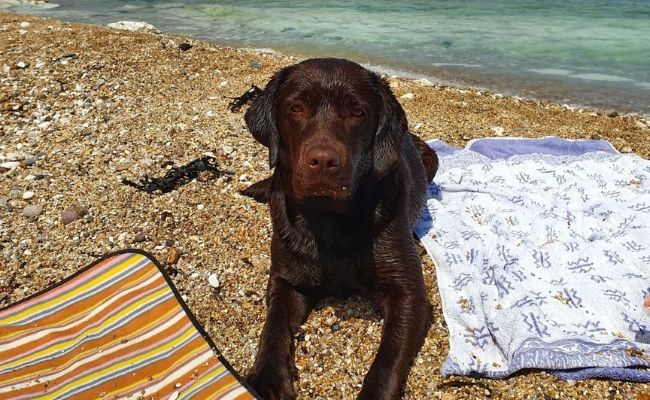
What to do if your dog has heatstroke?
Act fast – but do your best to stay calm. Remove your dog from the heat quickly – to the coolest room in the house if you’re at home or to a shaded area if you’re outside. Cool your dog down by wetting their fur with cool water and offering them water to drink. Wet a towel with cool water too and dab your dog’s fur with it (don't leave a towel draped on your dog, as it can heat up and not let more heat escape from the body); encourage them to drink little and often and contact your vet as heatstroke can be very dangerous.
Heatstroke prevention tips
A few simple measures can drastically lower your dog’s chances of getting heatstroke. These include:
- Make sure your dog has access to shade at all times – be careful around large open fields
- Walk your dog during cooler times of the day and avoid the midday sun
- When walking, bring plenty of water for your dog
- Avoid walking your dog on hot asphalt/concrete – if you can’t keep your hand on it for long, imagine how your dog feels walking on it!
- Use sun cream if your dog’s fur is pale or thin
- Take furrier dogs to the groomers
- And never, ever leave your dog alone in the car!
But most importantly, stay alert. You know your dog better than anyone but never underestimate the sun, and how quickly dogs – just like humans – can become dehydrated in the absence of shade and fresh water.

How to keep your dog cool in the summer
Tip 1: Refreshing treats
Give your pooch a refreshing, fun treat to stay cool and entertained during the warmer months. Swap out traditional treats with an ice cube or freeze your dog’s toys, such as a kong with ice in the middle - dogs have lots of fun playing with these!
Tip 2: A refreshing swim
If your dog is a fan of water, swimming is a great way to safely exercise your dog in the heat, but be aware that some spots are safer than others, so always check before allowing your dog to dive in. If on the beach, be sure to take heed of any signs alerting you to strong tides.
If your dog prefers a city swim, have a quick look off the banks before throwing a stick or toy, as we sometimes see dogs with cut paws from broken glass that was sitting just under the water by the water’s edge.
For hounds who are keen on the water but may not be the world’s strongest swimmers, there are a variety of doggy life jackets available to try. These are a fantastic safety device, enabling them to swim safely to their heart’s content.
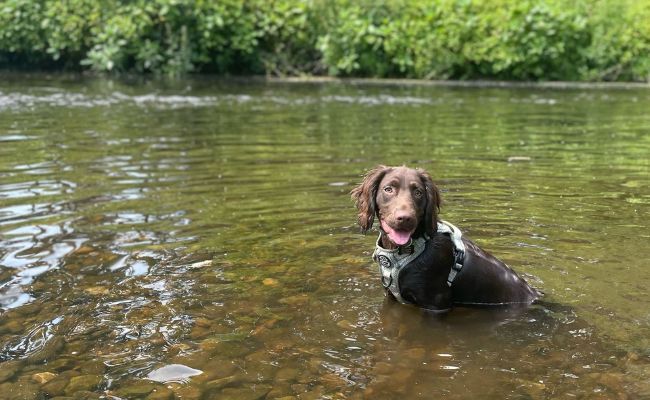
Preventing dog parasites and other pesky problems
Tip 3: Prevent little critters
Flea and tick prevention is important year-round, but during the summer months, these parasites undergo something of a population explosion. There are many products which help prevent tick or flea infestation, from spot-on prescription treatments to collars. It is particularly important to ensure that your pooch is up to date with treatment - prevention is better than cure! Ticks tend to congregate more commonly in certain parts of the country, so it is advisable to find out before travelling if they are resident in your holiday or day trip destination.
If your puppy pal does pick up a tick, they can be removed relatively easily by a vet or yourself if you have been shown how to by a veterinary professional and are in possession of the tools. It is very important to ensure ticks are removed fully, including the entire head. It is always better to be safe than sorry and consult your vet if you are not sure how to do it yourself.

Tip 4: Protect against lungworm
This is another parasite that you need to be particularly vigilant in providing protection against. Lungworm is carried by slugs and snails and can be dangerous if an infestation occurs. As these slimy garden invaders are more common over summer, our advice is to always keep your dog up to date with a licensed veterinary lungworm prevention program and to remove any snails or slugs you happen to see in your garden (wear gloves!). If you notice your dog eating a slug or snail, don’t panic, but do give your vet a call and ask for their advice.
Tip 5: Treat grass seeds
This pesky seed commonly causes problems for dogs during the summer months. As the plants mature, barbed seeds sit at the top of certain types of grasses, the most common being ‘barley grass’. These seeds can easily get caught in long ears, on coats and between toes. These nasty seeds have a sharp tip which can easily penetrate soft skin and work their way in, resulting in a painful fissure. We spend many an operating session during the summer months searching for and removing grass seeds from poor doggies’ toes and ears. It is a good idea to always check your dog’s ears, around their face and between their toes after a walk so that you can pluck any grass seeds from the coat before they manage to work their way under the skin. It’s also helpful to keep the hair trimmed shorter in problem areas.
My Family Pet and Bridge Vet Centre vet Joann Bennett shares her top tips on keeping your dog cool and comfortable.

Keep your dog hydrated
Think how refreshing an ice-lolly or cold drink is during hot days. You can do this for your dog too with an ice cube or a frozen Kong toy, it will be much appreciated by your furry friend. These treats serve a hidden secondary purpose too: they’re fantastic entertainment for both you and your dog.
As handy and refreshing as frozen treats are, they’re not a substitute for clean, fresh water so make sure you provide this for your dog along with their ice cubes. Think of how often you get thirsty when it’s hot and multiply it by 10, that’s how our furry companions feel!
Adapt your walks to the weather
When it’s super hot outside, aim to walk your dog early in the morning and later on in the evening as these are the coolest times of the day. If you find yourself playing fetch or tug of war at midday when the sun is hottest, do so indoors where it’s cool!
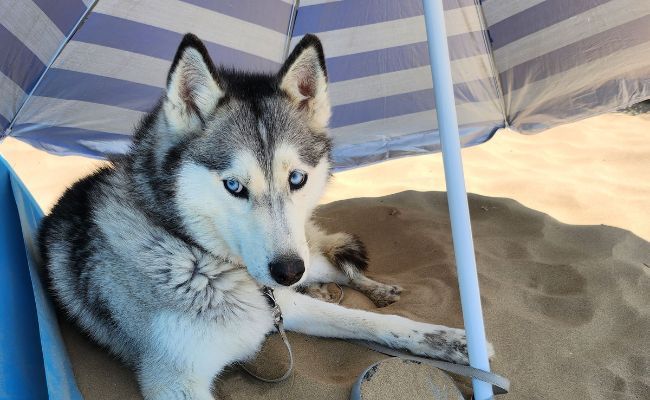
Shade is your friend
During your early morning/late evening walks, don’t underestimate shade breaks. Your dog will probably seek them out but be sure to help them. If you’re choosing between a vast open area and an area with lots of trees or shelter and it’s roasting outside, always choose the latter.
If you’re out in the garden, remember to check up on your pooch every so often. Does your garden have a shaded area that your dog can rest in? If not, or during the hottest parts of the day, keep your back door open so your dog can head indoors for some cooling-off time. If they’re so excitable that they ignore the heat, encourage them to head inside once in a while. You can use frozen treats as an incentive.
Allergy season?
Dogs can have severe allergic reactions to pollen and insect bites, just like humans. There’s no real way of avoiding this but if your dog is prone to allergic reactions, a few little tricks can help you minimise their risk:
- Walk during cooler parts of the day (that old chestnut!)
- Steer clear of shrubbery and bushes
- Have your dog groomed – the less fur they have, the less the pollen has to cling on to
- Wash your dog thoroughly after walks

Remember dogs can get burnt too
Sadly, fur isn’t impenetrable! Dogs can get sunburnt too, especially if their fur is thin or light-coloured. During really warm days, think about applying some sun cream to your pooch.
And apart from that…
If your dog is brachycephalic (short-nosed breeds like Pugs or French bulldogs), take extra care to keep them safe and cool. Brachycephalic breeds can’t regulate their body temperature as well as longer-nosed dogs so it’s especially important not to overexert them during the hot weather.
Follow these tips to help your dog stay cool and healthy during the summer. They’ll woof you ‘thanks’ in return!
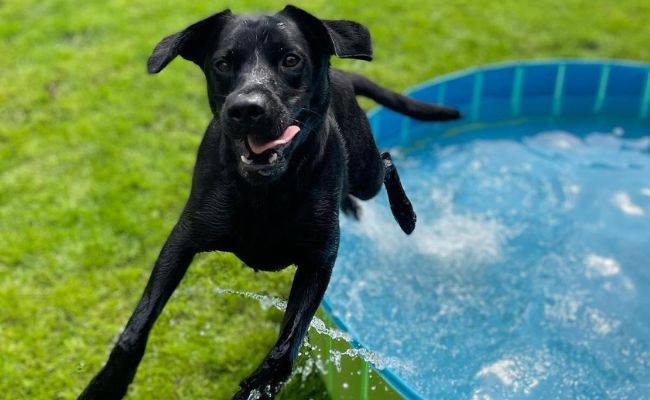
Fun in the sun
For a fun, safe and healthy summer, our friends at David Cuffe & Associates have some top tips to ensure your dog enjoys every bit of fun in the sun.
- Swap out traditional treats for an ice cube or freeze their toys.
- Always have a portable drinking bowl and bottled water.
- Swimming is a great way to safely exercise dogs in the heat. Avoid exercise during the hottest part of the day.
- Never leave a dog locked inside a car during hot weather.
- Ensure they’re up to date with flea and tick prevention care.
- Check your dog’s ears, face and between their toes after a walk. Pluck any grass seeds from their coat.
- Wearing gloves, remove any snail or slugs from your garden. They carry lungworm and can be dangerous for your pet.
BorrowMyDoggy connects dog owners with local borrowers for walks, sitting and holiday care.
Learn more about how BorrowMyDoggy works
If you haven’t already, sign up to BorrowMyDoggy and help us leave “Pawprints of Happiness’ on the lives of dogs and humans.
Sign up now
Useful summer guides
- How to keep dog cool in summer
- Keeping your flat nosed friend cool
- Pupsicles
- Fleas and ticks: facts all owners should know
- How to have a dog friendly BBQ
- Protect your dog from heat stroke
- How to keep your dog safe at the beach
- Dog friendly beaches in the UK
- How to keep your dog entertained when it's too hot outside
